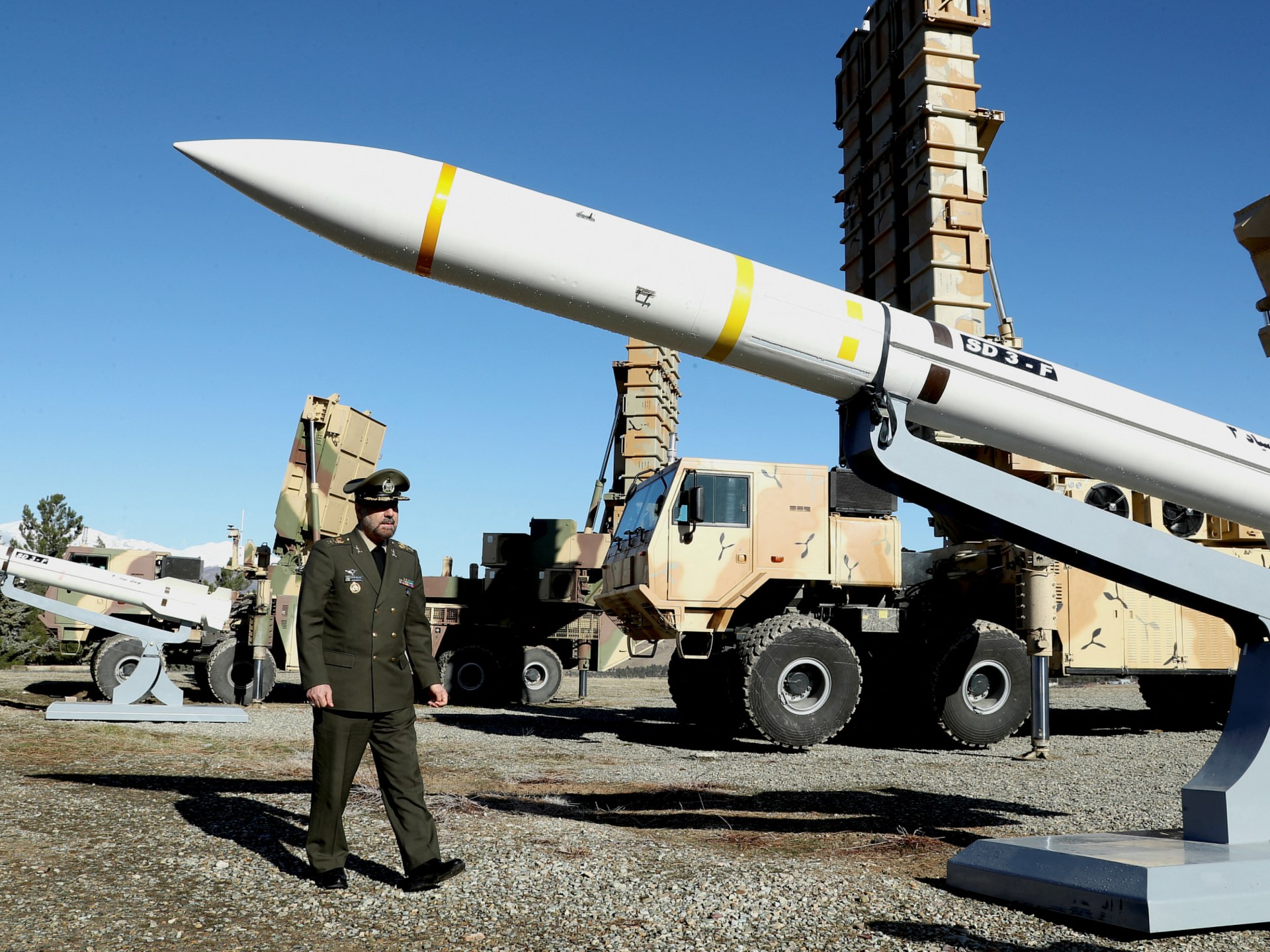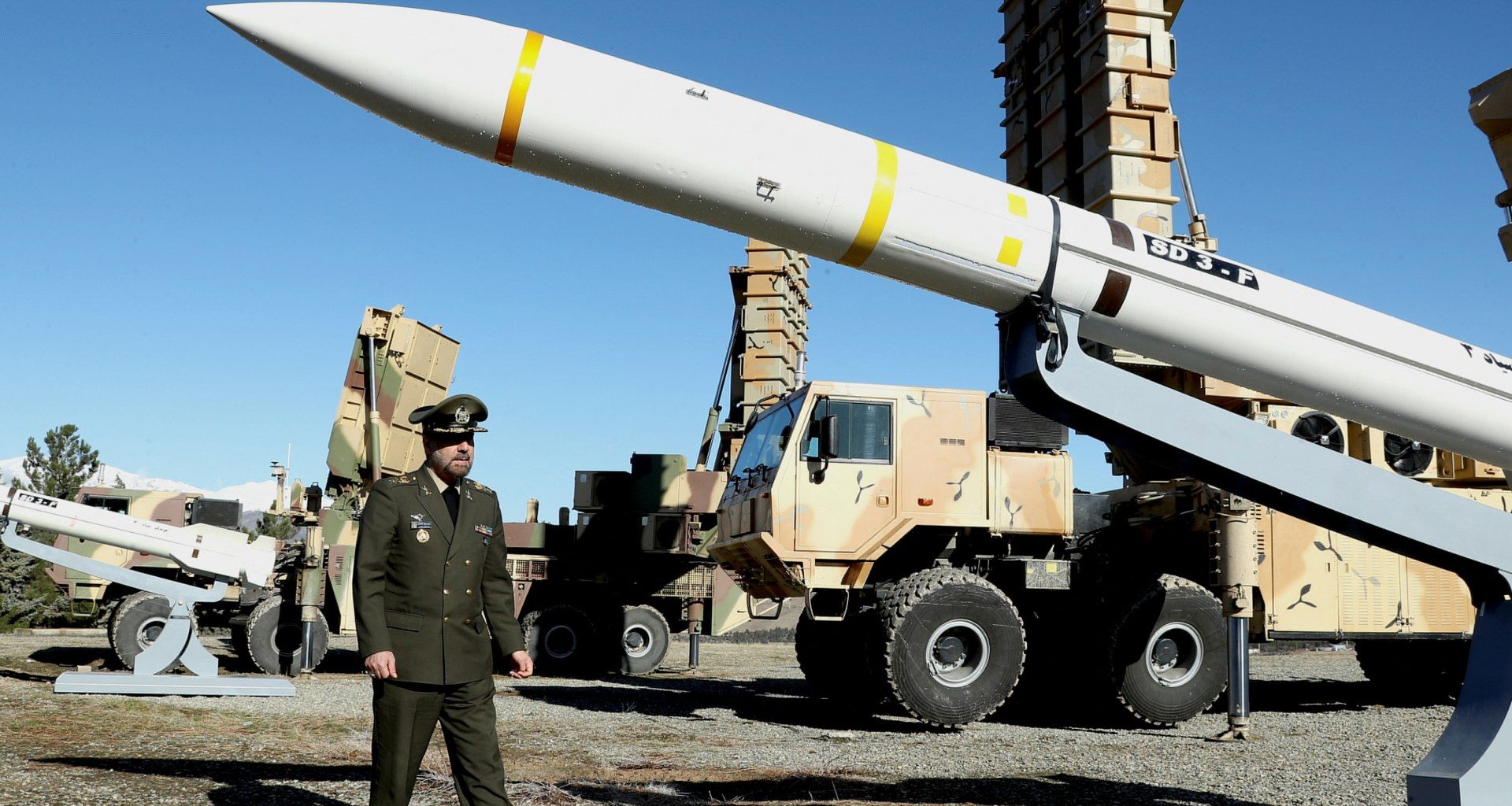
Tehran, Iran – Israel has pledged to “exact a price” from Iran in response to missile and drone attacks launched by Tehran in retaliation to the deadly bombing of its consulate in Syria at the beginning of this month.
Israel’s war cabinet has met several times to debate a course of action to complement a diplomatic push against Iran since Saturday’s unprecedented direct attacks on Israel, with Israeli army chief of staff Herzi Halevi saying a military response is certain.
Iranian President Raisi threatened a “massive and harsh response” on Wednesday if Israel decides to launch a direct military assault on Iranian soil. So how effectively can Iran defend itself if such an attack occurs?
Relying on local defensive arms
For decades, Iran has increasingly insisted on relying on its local capabilities when it comes to its economy, but a similar push can also be seen in its military sector.
Much of that sentiment is rooted in Iran’s eight years of war with neighbouring Iraq, which invaded Iran in 1980 under former ruler Saddam Hussein. Baghdad was militarily backed by a multitude of foreign powers, including the United States.
Hampered by decades of sanctions and embargos, Iran’s air superiority is still heavily challenged, with some of its fighter jets and equipment, including US-made F-4 and F-5 fighter jets, dating back to before the country’s 1979 revolution – which overthrew the West-backed monarchy of Shah Mohammad Reza Pahlavi.
Iran now mostly operates Russian Sukhoi and MiG fighter jets that date back to the Soviet era. The Iranian air force has been building its own jets too, like the Saeqeh and Kowsar which are based on US designs, but they are not believed to be a match for some of the top fighter jets like the F-35s that Israel employs in large numbers.
A delivery of two dozen Russian-made Su-35 fighter jets, negotiations for which have been ongoing for some time, could significantly revitalise the Iranian air force, but it would not eliminate the need for robust air defence batteries.
Long-range missile batteries
Iran has tried to compensate for its ageing domestic fighter jets with ambitious missile programmes. It has particularly focused on improving its air defence systems – in addition to burying some of its airbases, missile depots and nuclear facilities deep in the mountains to protect them against bunker buster munitions given to Israel by the US. Israel has extensively used the US-supplied bunker buster bombs during its six months of war on Gaza.
The longest-range missile defence system operated by Iran is the locally-developed Bavar-373, which entered service in 2019 after a decade of development and testing, and has been significantly improved since.
In November 2022, Iranian officials displayed an improved Bavar-373, which they said had the range of its radar detection improved from 350km (217 miles) to 450km (280 miles) and is now equipped with advanced Sayyad 4B surface-to-air missiles.
It can reportedly lock on targets – including long-range ballistic missiles, drones and stealth fighter jets – at up to 400km, track 60 targets and engage six targets at once, and hit them at a range of up to 300km (186 miles).
Iranian state media have said the system is in some aspects superior to the Russian-made S-300 system and is even comparable to the more advanced S-400 batteries, which are some of the most advanced systems in the world. The Bavar-373 has not seen battle outside of military exercises in Iran, but experts regard it as a component of one of the densest air defence networks in the world.
In addition to Russia’s Tor missile defence systems, Iran operates S-300 systems as well. Tehran received the latter after the implementation of its now-comatose nuclear deal with world powers in 2016.
The S-300 systems, which the Soviet Union first put into operation in the late 1970s, are designed to shoot down aircraft, drones and incoming cruise and ballistic missiles at up to 150km (93 miles), whereas the Tor is a low-to medium-altitude system to engage threats at distances of up to 16km (10 miles).
Layers of missile defence systems
Iran operates a wide variety of other locally-developed missile defence batteries that use an array of missiles to build layers of defence behind the longest-range systems.
Multiple medium-range defence systems, including Arman, Tactical Sayyad and Khordad-15 can defend Iranian skies from targets at ranges of up to 200km (124 miles) at different altitudes.
Arman, which was unveiled in November 2022, is mounted on the back of military trucks and ready to deploy within minutes. It comes in two versions, using active or passive electronically scanned array radars – which are accurate and difficult to jam – and is designed to combat tactical ballistic weapons meant for battlefield use in under 300km (186 miles).
The Arman system is equipped with missiles aimed at fighting off precision-guided, bunker buster munitions designed to destroy fortified or underground structures.
Incoming threats that manage to circumvent the mid-range systems will be faced with short-range Iranian batteries, including Azarakhsh, Majid and Zoubin. The Azarakhsh can be seen in the video below.
🚀 سامانه پدافندی آذرخش pic.twitter.com/o6gP7hedHa
— MESHKAT (@projectmeshkat) February 17, 2024
Azarakhsh, which was unveiled at the same time as Arman, is a compact system designed for low-altitude engagements to counter threats like drones and quadcopters. It can detect targets at a range of 50km (31 miles), with an optical tracker chasing targets up to 25km (16 miles).
Multiple Iranian missile defence systems are capable of being launched vertically – offering greater flexibility and space – which means they can also be deployed by warships.
Iran plans to unveil more missile defence systems this year, a senior military official said in late March.
The Islamic Revolutionary Guard Corps (IRGC) and the Iranian army also possess many types of ballistic and cruise missiles covering ranges up to 2,000km (1,243 miles), along with a wide range of reconnaissance and attack drones – several of which were used during Iran’s attack on Israel on Saturday.
What about sabotage, cyberattacks?
In more than a decade of a shadow war with Iran that has increasingly spilled out into the open, Israel is believed to have relied on unconventional warfare to target Iranian interests.
Israel has sabotaged major Iranian nuclear facilities multiple times, assassinated nuclear scientists using bombs and a satellite-controlled machine gun mounted on a pick-up truck, launched explosive-laden quadcopters at military facilities, and blown up a gas pipeline.
It has also been widely believed to be behind multiple large-scale cyberattacks, including those on national networks operating major ports, airports and petrol stations. Iran has officially blamed Israel for many of these attacks.
Iran has taken significant hits as a result of these attacks over the years, but has also learned to bounce back and build stronger defences.
The National Organization for Passive Defence is the main Iranian state entity in charge of staving off cyberattacks – with officials saying they defend against hundreds, if not thousands, each day.
Iranian hackers have also been suspected of being behind a number of cyberattacks on Israeli interests over the years. Israeli newspaper Haaretz reported on Tuesday that an Iran-linked website has been set up since the start of April where a group of international hackers are publishing data from breaches carried out against sensitive databases and websites in Israel, including nuclear facilities.
Read More: World News | Entertainment News | Celeb News
Aljazera









